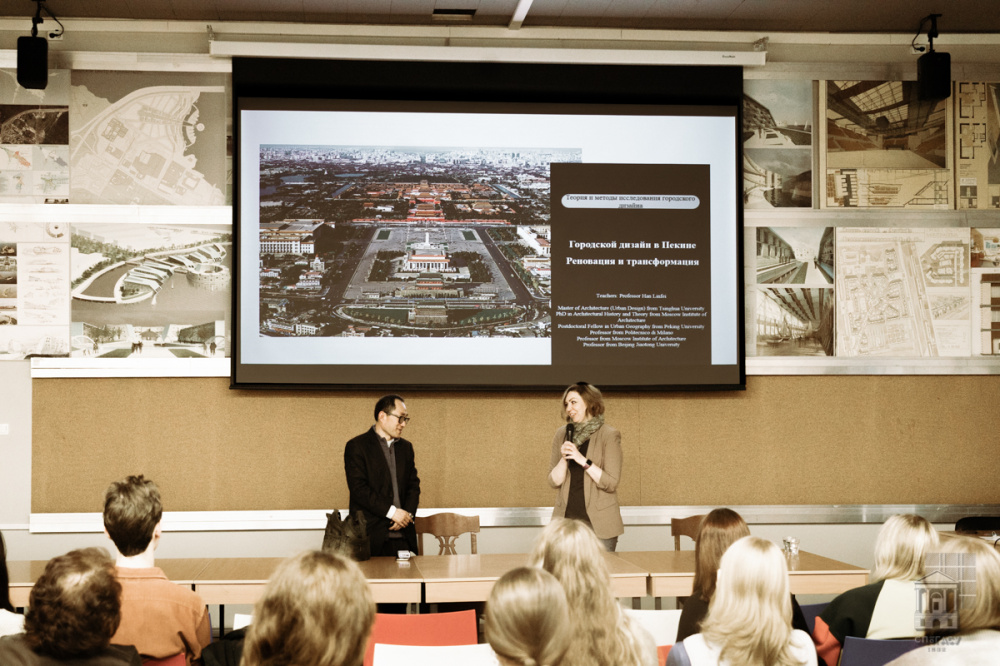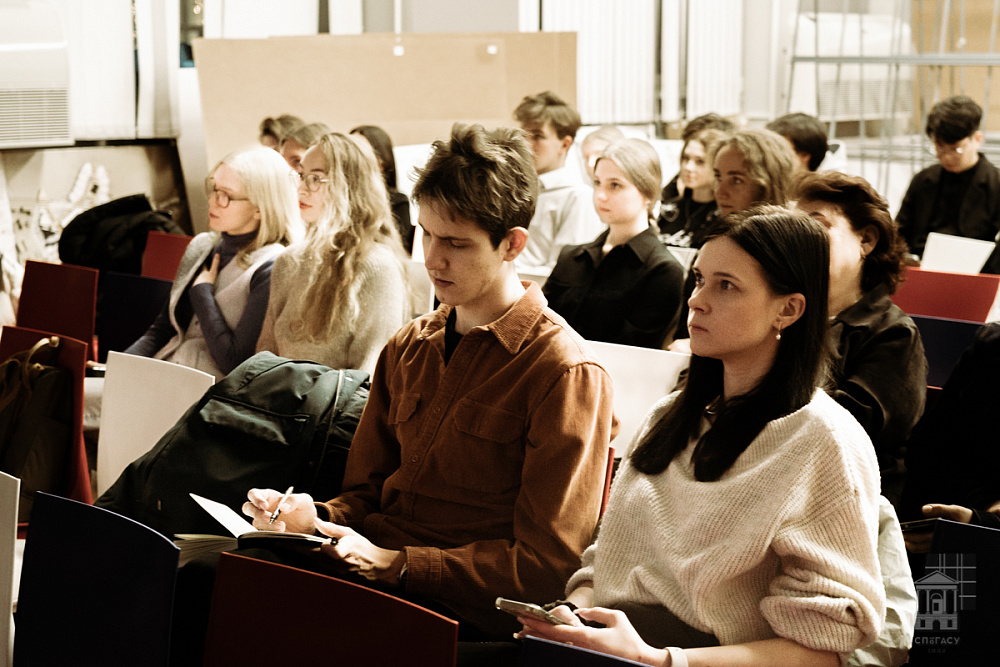 Han Linfei and Daria Boytsova
Han Linfei and Daria Boytsova
On 20 December, SPbGASU hosted a lecture on “Urban Design in Beijing. Renovation and Transformation” from professor at the Faculty of Architecture at Beijing Transport University and foreign member of the Russian Academy of Architecture and Construction Sciences Han Linfei.
The lecturer was introduced by Daria Boytsova, Deputy Dean of the Faculty of Architecture for Academic Affairs, Senior Lecturer at the Department of Architectural Design. Daria Vladimirovna said that Professor Han Linfei graduated from the Moscow Institute of Architecture and became a PhD in Architectural History and Theory in 1998. He is the author of 130 articles, 25 monographs, and seven textbooks.
"Beijing is the capital of the People's Republic of China and one of the world's most famous historical and cultural cities, ancient capitals. It has more than 3,000 years of history as a city and more than 800 years of history as a capital. The Old City of Beijing is the largest and best-preserved ancient city in the world. Its main buildings, high city towers, typical quarters and courtyard complexes on the central north-south axis are still well preserved and represent valuable historical and cultural heritage," said Han Linfei.
According to the professor, being the capital of the last imperial dynasty of China, Beijing left many questions to ponder in terms of urban form and spatial structure. The restrictions imposed on the city by the terrain, the compliance of urban design with the rules of etiquette, the unity of the living space of the emperor and his subjects, the unity of symbolic and practical functions - all these factors turned Beijing into a city of harmony between man and nature.
The audience learned that one of the features of Beijing's urban design is the central axis, which runs through the entire city from north to south. The city's streets are laid out in a rectangular grid. The main streets run from north to south, and the alleys run from east to west. They have the same length and distance from each other. The water system is built on the basis of natural reservoirs. The main colors of the city are yellow, red, blue, white, and light blue. Harmony between man and nature was the highest ideal that the ancient Chinese aspired to, and it became the main principle in the design of significant buildings.
The professor noted that Beijing's transformation from a traditional capital to a modern city was a slow and painful process, full of difficulties. The period from 1949 to 1953 was the initial stage of the formation of the master plan for the development of Beijing. In fact, the City Planning Committee was established in 1949. In 1950, architects Lin Sicheng and Chen Zhanxiang proposed to move the government offices of the new China from the old city to the western suburbs. This was necessary to preserve the old city as a cultural center and museum.
The professor cited successful examples of Beijing's renewal, which he hopes will inspire many architects and participants in the renewal of historic cities.
The lecture was attended by students of the Faculty of Architecture of all fields of study. According to their feedback, the experience of implementing urban development strategies, as well as modern architectural facilities in China, presented by Han Linfei, is very interesting, motivates for a deep study of the unique traditional architecture of China and modern approaches to the preservation of historical and cultural heritage.

